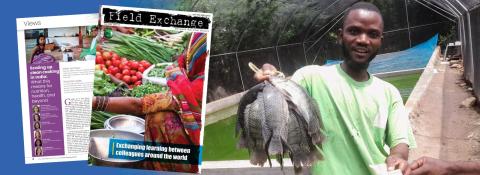Bangladesh: Experiences of adolescent mothers in caring for their preterm babies
This is a summary of the following paper: Shumona S, Ahmad E, Shema M et al (2024) Perception and experiences of adolescent mothers and communities in caring for their preterm babies: Findings from an in-depth study in rural Bangladesh. BMJ Pregnancy and Childbirth, 24, 1, 145. https://doi.org/10.1186/s12884-024-06345-x
Bangladesh has one of the highest incidences of preterm births globally. The country also has a high prevalence of early marriage and adolescent pregnancy. According to the Bangladesh Demographic and Health Survey (2017-2018), 71% of women aged 20-49 years were married by the age of 18. The survey also highlights that 28% of adolescent girls aged 15-19 years have begun childbearing. However, despite high rates of adolescent pregnancy and preterm birth, there is a lack of documentation regarding adolescent mothers’ experiences and the interventions needed to assist them in preterm infant care.
To address this gap, a qualitative study was conducted in rural villages of central Bangladesh to understand both mother and community perspectives on preterm birth and preterm care. The study focused primarily on adolescent mothers aged 15-19 years who had delivered preterm babies within the previous six months. Additionally, adolescent mothers of full-term babies and older mothers who had experienced preterm birth in the same timeframe were included to compare perceptions and experiences. Secondary participants included the immediate family members of preterm infants, community members, and healthcare providers.
Findings revealed diverse perceptions of the ideal gestation period – described in months, rather than weeks. Most participants relied heavily on dates provided during hospital visits to estimate their due dates, underscoring the critical role of antenatal care. Although participants’ understanding of causes of preterm birth was generally limited, “poor nutritional status of the mother or inadequate eating” was one of the most mentioned causes for premature birth. All participants described preterm infants as “undernourished”, “small”, and/or “weak”, with “low weight” and having a “frail appearance” or “long and thin hands and legs” also a focus. Despite both adolescent and adult mothers mentioning the need for the provision of extra care to preterm babies, adolescent mothers faced challenges pointing to what this care entailed. Adolescent mothers were found to have low decision-making abilities and often consulted family members, depending on female family members for caregiving and emotional support.
Traditional practices persisted, including bathing children after birth and non-exclusive breastfeeding by giving honey and warm water. Participants in the study widely shared the view that, for undernourished and weak preterm babies to grow, they must be fed well. For severely preterm babies unable to breastfeed, milk was expressed and the baby then fed with a spoon. None of the participants demonstrated awareness of the significance of regular weight monitoring for infants.
Various factors – including local knowledge, socio-cultural practices, and health system limitations – shaped the understanding of and care practices for preterm infants among both adolescent and adult mothers. Improving birth outcomes requires increased awareness among adolescents, women, and families regarding preterm birth, alongside improvements in the quality of preterm birth services offered at healthcare facilities.
The Field Exchange editorial team would also like to highlight the importance of strengthening interventions to delay early marriage as a root cause.


